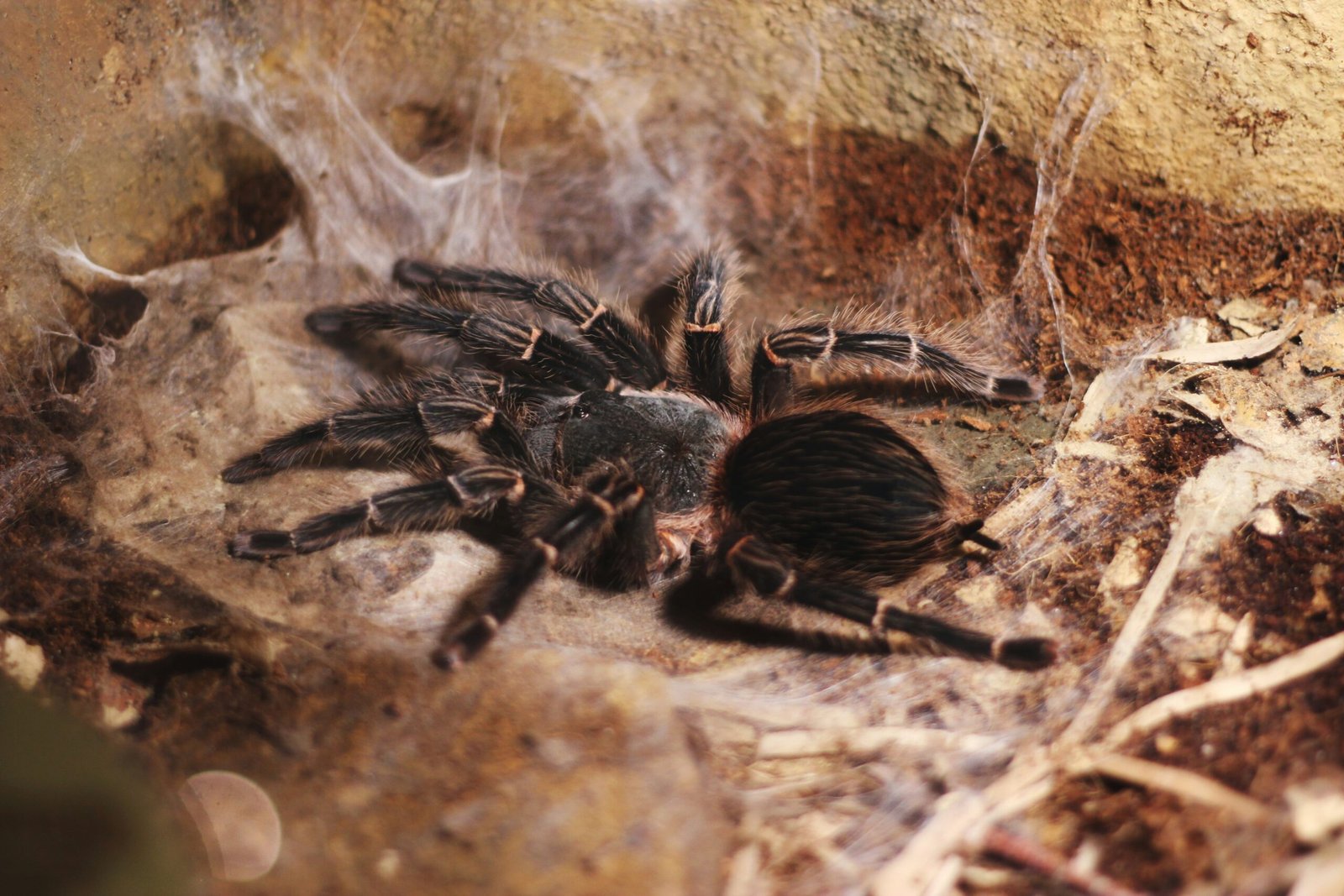Have you ever wondered about the intriguing yet challenging process of breeding tarantulas? This unique endeavor can be both fascinating and unpredictable. One of the most pressing concerns during tarantula breeding is managing aggression between the creatures. Despite their solitary nature, tarantulas must interact during breeding, which can sometimes lead to aggression. Let’s dive into how you can handle these situations with care and understanding to ensure a safe and successful breeding experience.

Understanding Tarantula Aggression
Before delving into effective management strategies, it’s essential to grasp why aggression occurs. Tarantulas are naturally solitary creatures, and during breeding, the introduction of another tarantula into the shared space can cause stress and defense mechanisms to kick in.
Why Tarantulas Are Aggressive
Tarantulas often view other animals as threats or prey. This isn’t because they’re hostile by nature but because their instincts prioritize survival. Male tarantulas, in particular, are prone to increased aggression as they tend to roam more in search of females, not unlike their behavior in the wild.
Signs of Tarantula Aggression
Being able to identify the signs of aggression can significantly help in managing it. Aggressive behavior may include:
- Raising the Front Legs: An indication that the tarantula feels threatened.
- Slapping or Striking: Attempting to push or bite the other tarantula.
- Hissing or Spitting: Some tarantulas may make noises as a warning.
Understanding these signs can guide you in taking prompt action to separate the creatures if necessary.
Preparing for Breeding
Preparation is a crucial step in reducing the likelihood of aggression during tarantula breeding. Your strategies should minimize stress and maximize safety.
Setting the Right Environment
Creating a conducive environment is vital. Ensure that the habitat closely mimics their natural environment. This reduces stress and can increase the chances of breeding success.
- Adequate Space: Provide plenty of space for both the male and female tarantulas to feel comfortable and avoid constant contact.
- Hiding Spots: Incorporate areas where each tarantula can retreat if necessary.
- Neutral Meeting Point: Introduce them in a neutral area, which neither tarantula has claimed, to prevent territorial behavior.
Proper Timing
Timing plays a critical role in breeding. It generally aligns with the natural reproductive cycles of the tarantulas.
- Mature Tarantulas: Ensure both male and female tarantulas have reached sexual maturity.
- Molt Timing: Breeding is usually successful when the female has recently molted, indicating she is receptive.
- Feeding Beforehand: Give plenty of food to reduce hunger-related aggression.
Pre-Introduction Phase
Before placing the tarantulas together, allowing them to acclimate to each other’s presence from a safe distance can be beneficial.
- Visual Acclimation: Place their enclosures side by side for a few days.
- Scent Familiarization: Allow them to get used to each other’s scent without direct contact.

Managing Aggression During Breeding
Once you’re ready to introduce the tarantulas, continuous monitoring and quick reactions are necessary to handle any aggression that may arise.
Close Supervision
When you first introduce the tarantulas, it’s essential to supervise the interaction closely. This means being present throughout the process.
- Quick Intervention: Be prepared to separate them immediately if aggression is evident.
- Tools On Hand: Consider using tools like a soft brush or a divider to separate them quickly without causing harm.
Observation of Behavior
Pay close attention to their behavior. Look for any signs of tension or stress.
- Reciprocal Movements: Ideally, the male approaches with caution, and the female reciprocates without aggression.
- Immediate Separation: If one tarantula becomes defensive, separate them immediately and try again later.
Post-Introduction Adjustment
If the introduction is successful, allow the tarantulas some time together, but continue monitoring their behavior closely.
- Short Intervals: Limit initial interactions to short durations to prevent stress.
- Reduce Distractions: Keep the surrounding environment as calm as possible to minimize external stressors.

Handling Post-Mating Behavior
Post-mating behavior can also be a period of vulnerability and unpredictability. While aggression may reduce, it’s essential to maintain your vigilance.
Safe Separation
After mating, separate the tarantulas safely to prevent any sudden aggression.
- Separate Enclosures: Return each tarantula to its respective enclosure.
- Observe for Changes: Watch for any behavioral changes indicative of stress or illness in either tarantula post-separation.
Providing Supportive Care
Proper care for both tarantulas post-breeding is crucial. This support helps them recover from the stress of mating and maintain their health.
- Nutritional Care: Offer both tarantulas a nutritious meal after the breeding process to replenish energy.
- Environmental Care: Maintain optimal conditions in their habitat with proper humidity and temperature levels.

Behavioral Insights for Success
Learning from each breeding attempt enhances future success. Take note of each encounter, observing what works and what doesn’t.
Documenting Observations
Keep a record of each breeding attempt, noting behaviors, timing, and outcomes.
- Patterns and Trends: Identifying patterns can help anticipate or prevent future aggression.
- Adjusting Strategies: Adjust techniques based on past experiences for improved results.
Learning from Experts
Engaging with experienced tarantula breeders can provide valuable insights.
- Join Forums or Clubs: Become part of the breeding community for shared experiences and advice.
- Seek Professional Guidance: Consult with a specialist if you encounter persistent aggression issues.

Conclusion
Managing aggression between tarantulas during breeding requires preparation, understanding, and vigilance. By ensuring a conducive environment, carefully supervising interactions, and providing post-mating care, you can reduce aggression and increase the chances of a successful breeding experience. With patience and persistence, breeding tarantulas can be a rewarding endeavor that enriches your understanding of these fascinating creatures.
If you have questions or need further assistance, don’t hesitate to reach out to fellow enthusiasts or specialists who share your interest in these amazing arachnids.